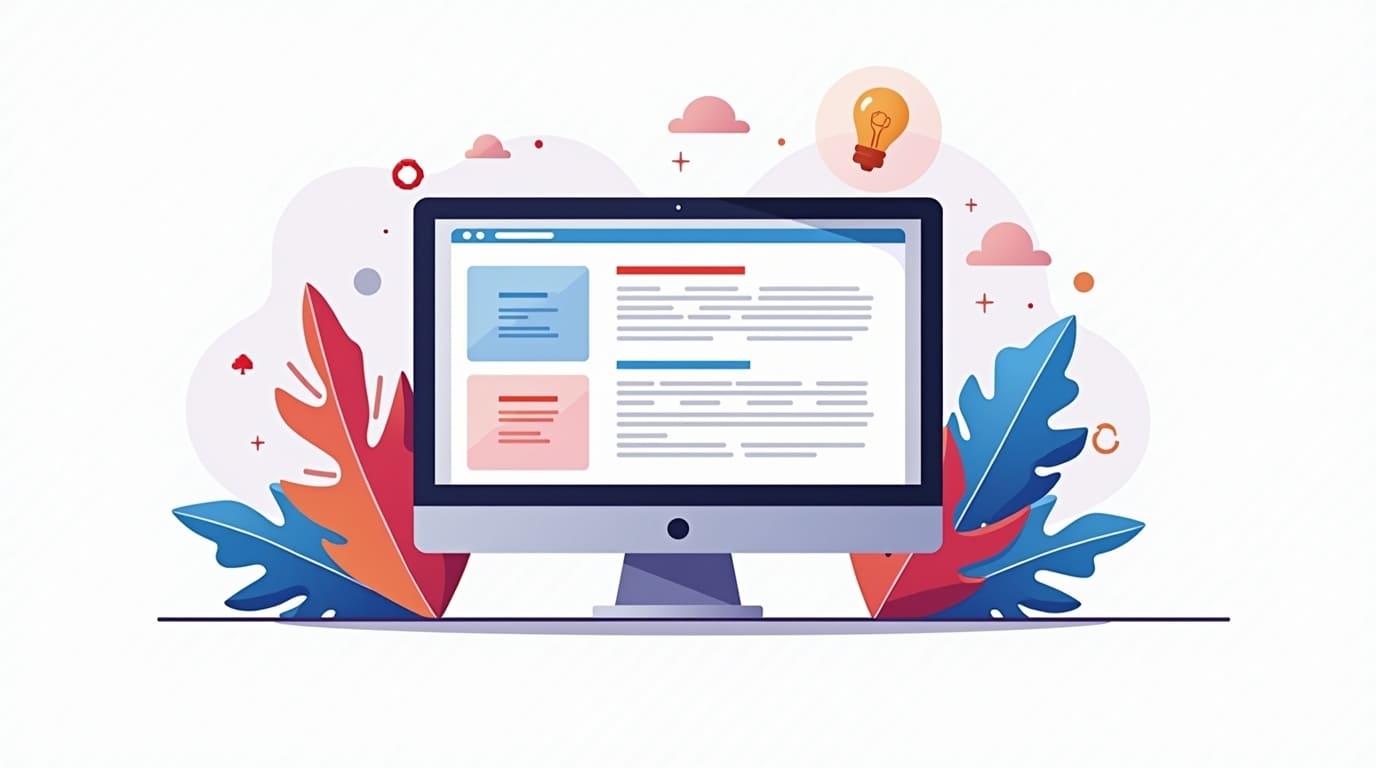Struggling to keep new users engaged after sign-up? SaaS onboarding UX can make or break the entire customer experience—and ultimately, your revenue. If your users feel lost or overwhelmed, they won’t stick around. In this guide, we’ll walk you through proven UX patterns to simplify feature walkthroughs and reduce churn, helping you create an onboarding flow that users love and return to.
Effective Feature Walkthroughs for SaaS Onboarding
Designing effective feature walkthroughs is an art that balances education and engagement without overwhelming users. The goal is to help new customers quickly understand your platform’s core value while making their first experiences seamless and enjoyable.
Step-by-step flow design for onboarding:
Build an onboarding flow that introduces features progressively. Start with the essential tools users need to succeed immediately, followed by secondary functions as they become comfortable. This step-by-step approach helps users build confidence without feeling swamped.
Balancing automation vs. user control:
While automating walkthroughs ensures consistency, providing users control over pace is equally important. Incorporate “Skip” buttons and “Back” options. Interactive modals combined with tooltips work best—tooltips highlight exact UI elements, whereas modals provide richer context without clutter.
Examples of successful SaaS feature walkthroughs:
Look at Notion’s onboarding, which uses minimalist pop-ups to highlight features exactly when needed, ensuring clarity without interruption. Slack, meanwhile, intersperses onboarding tips with interactive tasks, encouraging hands-on learning—a proven approach to faster feature adoption.
Tools and integrations to support walkthroughs:
Modern UX tools like Userpilot, Appcues, and Pendo allow SaaS platforms to create dynamic, personalized walkthroughs without heavy engineering efforts. They track engagement analytics to see where users drop off, enabling continuous optimization.
Actionable tip: Use micro-interactions to draw attention during walkthroughs. For example, subtle animations around buttons or UI elements during tooltips increase focus and retention.
Best Practices for Reducing Churn Through UX
Reducing churn isn’t just about locking users in—it’s about designing onboarding experiences that build trust, add immediate value, and maintain engagement.
Identifying friction points causing churn:
Analyze where users typically abandon the onboarding process. Common friction points include confusing navigation, unclear CTAs, or overwhelming feature sets. Use session recordings and heatmaps for precise behavioral insights.
Personalization in onboarding flows:
Leverage data collected during sign-up or early interaction to tailor onboarding steps. For instance, segment users by role or industry and highlight features most relevant to their workflow. Personalized onboarding increases perceived value and encourages deeper adoption.
Using user feedback to iterate UX:
Integrate feedback forms or quick surveys during onboarding to capture user sentiment in real-time. Act on insights by fixing pain points quickly. This iterative approach not only reduces churn but fosters a user-first culture.
Metrics to track churn reduction success:
Monitor key performance indicators such as Time to First Value (TTFV), onboarding completion rates, and churn rate within 30 and 90 days post-signup. Tracking activation events—users who reach a meaningful action—helps assess if your UX designs tangibly reduce churn.
Actionable tip: Implement a dynamic help system that surfaces FAQs or live chat support in response to detected user frustration (e.g., repeated error clicks). Immediate assistance mitigates dropout risk.
Common SaaS Onboarding UX Do’s and Don’ts
To create a seamless onboarding flow, understanding critical user experience principles is essential. Here are actionable do’s and don’ts when it comes to SaaS onboarding UX.
Do’s:
- Clear CTAs: Use concise, action-oriented calls-to-action that guide users forward confidently. Avoid vague buttons like “Next” with unclear goals—use labels like “Create Your First Project” or “Connect Your Account” instead.
- Progressive disclosure: Introduce complex features gradually. Avoid overwhelming users by showing only essential elements initially; reveal advanced functionalities as users become more comfortable.
- Contextual help: Embed support directly where users might struggle. Inline tips, tooltips, and in-app FAQs reduce frustration and support self-guided learning.
Don’ts:
- Information overload: Avoid dumping all features or information in a single onboarding step. This overwhelms users and increases abandonment.
- Forced tutorials: Don’t mandate that users complete entire walkthroughs. Allow them to skip or explore at their own pace—forcing tutorials can increase frustration.
- Ignoring mobile users: With rising mobile SaaS adoption, ensure onboarding flows are fully responsive. Neglecting mobile UX leads to poor engagement from a significant user segment.
Actionable tip: Test onboarding flows across devices and user personas regularly. Use A/B testing to validate UX changes before rolling out widely.
Emerging Trends and Advanced UX Tactics in SaaS Onboarding
The SaaS landscape evolves rapidly, and onboarding UX must keep pace with new technologies and user expectations.
AI-driven onboarding personalization:
Artificial intelligence now enables real-time adaptation of onboarding content. AI can analyze user behavior and preferences, automatically tailoring feature walkthroughs and tutorials for maximum relevance. For example, AI might delay introducing advanced features until a user demonstrates competence in basics.
Gamification techniques:
Incorporate gamification elements such as progress bars, badges, and rewards to motivate users to complete onboarding. Rewarding milestones transforms the onboarding process into a game-like experience, boosting engagement and retention.
Multi-channel onboarding experiences (email, in-app, chatbots):
Don’t confine onboarding to just in-app experiences. Strategic use of email drip campaigns, push notifications, and AI-powered chatbots creates a cohesive onboarding journey across platforms, reinforcing learning and engagement over time.
Integrating onboarding analytics for continuous improvement:
Leverage data-driven insights by integrating advanced analytics platforms like Mixpanel or Heap Analytics with your onboarding tools. This allows you to monitor user paths, spot drop-offs, and test feature walkthrough effectiveness—you can then iterate based on real user data.
Actionable tip: Experiment with conversational UIs or onboarding chatbots that simulate one-on-one guidance. Personalized, interactive conversations reduce confusion and feel less intrusive than traditional modals.
Conclusion
Mastering SaaS onboarding UX is crucial for driving engagement and reducing churn. By applying these patterns around intuitive feature walkthroughs and user-centric design, you set your product up for long-term success. Offering clear, personalized, and interactive onboarding flows ensures users quickly find value while feeling supported at every step.
For tailored, scalable onboarding solutions, WildnetEdge stands out as a trusted partner, empowering SaaS companies to deliver exceptional user experiences that keep customers coming back. Ready to transform your onboarding? Connect with WildnetEdge today to unlock the full potential of your SaaS product through expert onboarding UX strategies.
FAQs
Q1: What are the best UX patterns for SaaS onboarding?
The best patterns include clear feature walkthroughs, progressive disclosure, contextual tooltips, and personalized onboarding flows that reduce user confusion.
Q2: How can feature walkthroughs improve SaaS onboarding UX?
They guide users step-by-step through key features, improving understanding and engagement while preventing overwhelm, which enhances user retention.
Q3: What methods help in reducing churn through onboarding UX?
Reducing friction, personalizing the experience, actively collecting user feedback, and timely customer support within onboarding are effective methods.
Q4: How do AI and gamification influence SaaS onboarding UX?
AI personalizes onboarding by adapting content for users, while gamification motivates engagement through rewards and progress tracking, boosting retention.
Q5: Why choose WildnetEdge for improving SaaS onboarding UX?
WildnetEdge offers expert-driven, customizable onboarding solutions that combine cutting-edge UX patterns with analytics to maximize user retention and satisfaction.

Nitin Agarwal is a veteran in custom software development. He is fascinated by how software can turn ideas into real-world solutions. With extensive experience designing scalable and efficient systems, he focuses on creating software that delivers tangible results. Nitin enjoys exploring emerging technologies, taking on challenging projects, and mentoring teams to bring ideas to life. He believes that good software is not just about code; it’s about understanding problems and creating value for users. For him, great software combines thoughtful design, clever engineering, and a clear understanding of the problems it’s meant to solve.
 sales@wildnetedge.com
sales@wildnetedge.com +1 (212) 901 8616
+1 (212) 901 8616 +1 (437) 225-7733
+1 (437) 225-7733































